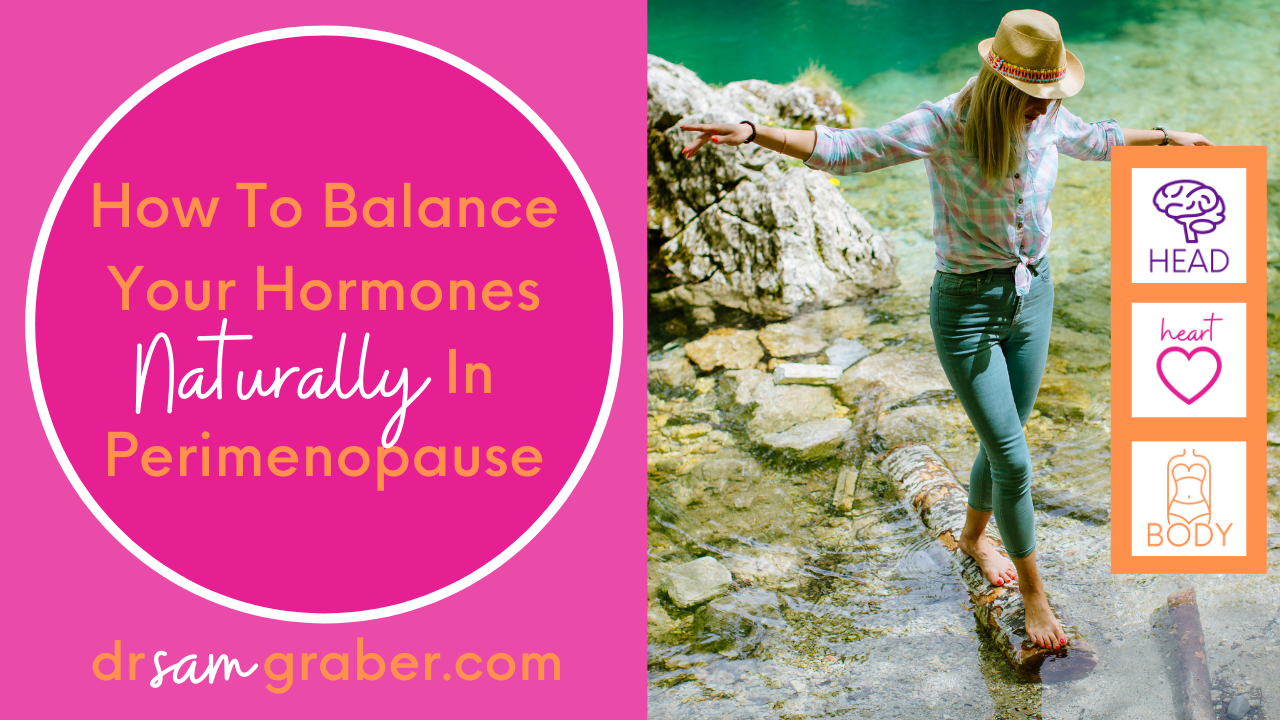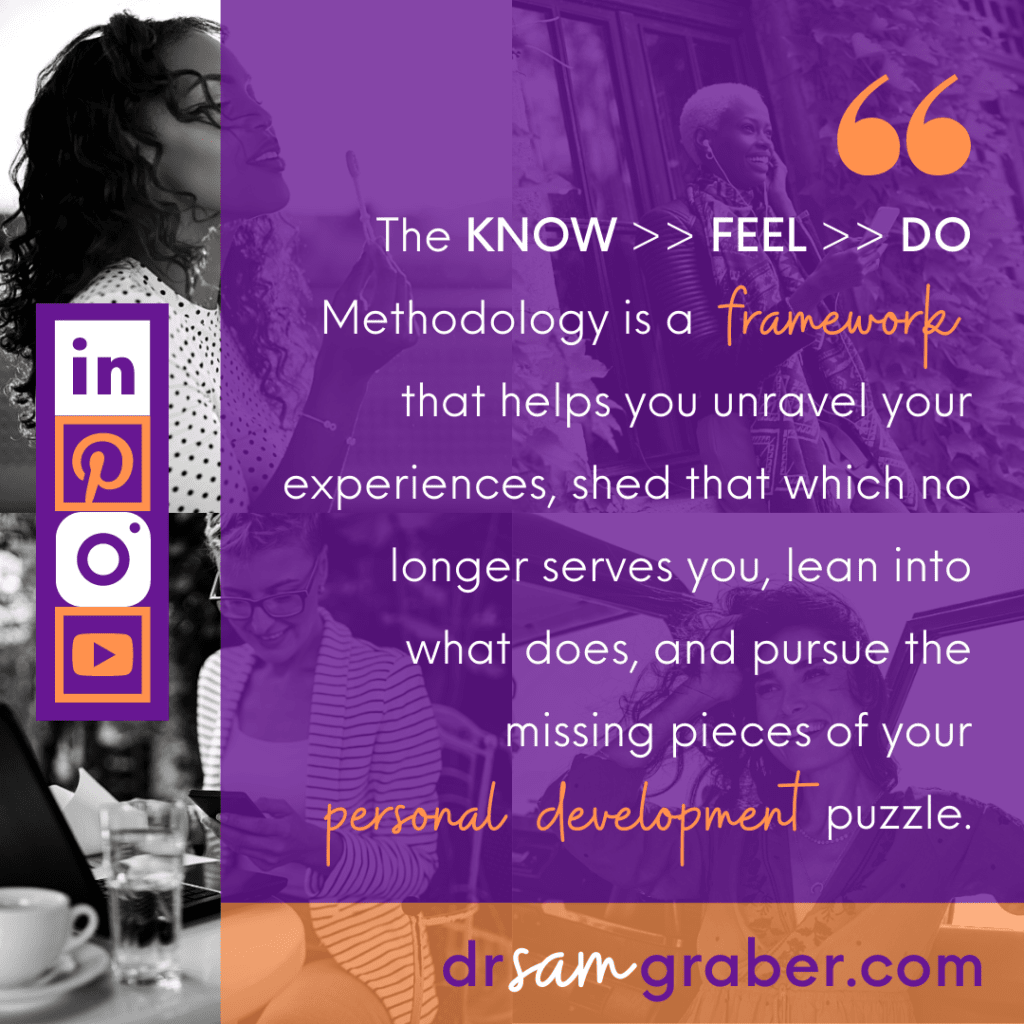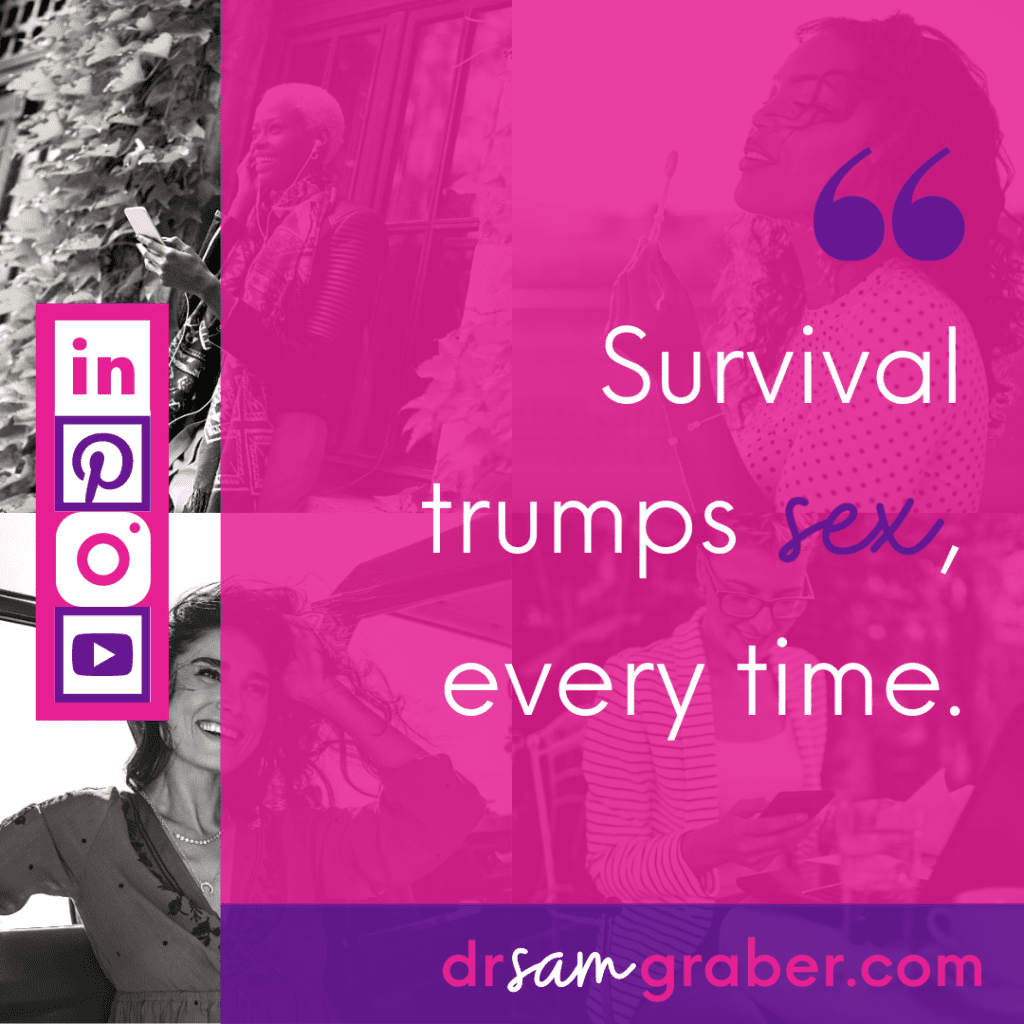
How To Balance Your Hormones Naturally In Perimenopause
During the month of March 2022, I will be focusing my outreach on the hormonal changes women experience during peri- thru post- menopause. You’ll hear a few familiar things and some that may be new to you. I encourage you to open your mind to a new way of thinking about what is unfolding for you during this powerful life transition. This conversation will be tailored more toward my female audience but men are always welcome to join the conversation. In fact, sit a spell gentlemen. Open your minds and your hearts to better understand what the women in your life experience.
Society’s messaging to seasoned women is that it’s all downhill from here and we should just take up as little space as possible. Our time has come, and it has gone.
Excuse me!?! I think not. And in the spirit of keeping this PG…to them, I say, “Go pound sand!”
If you’re a woman in your mid-30s and beyond, this is a conversation you want to plug into. You can do that in a couple of ways, one is by subscribing to my weekly #LinkedInNewsletter aptly named UNconventional Wisdom. It lives up to its name in many ways, primarily because the work I do and the way I view life are anything but conventional in nature.
I follow the principles of Nature and for far too long, her ways have been hijacked by well-manicured people in suits when we should have been listening to those in overalls with dirt under their fingernails.
Let’s get this conversation kicked off with a quickie Q&A sesh. I’ll ask the Q, you provide the A.
- Are your nerves are shot and everyone’s on that ONE you’ve got left?
- Are you packing on stubborn belly fat no matter how little you eat or how much you exercise?
- Are you burning up one minute and freezing the next?
- Maybe sleep evades you. Can you stay asleep at night and stay awake during the day?
- Do you feel like you’re crawling out of your skin one moment and feel totally numb the next?
- Are you feeling lost, alone, and at a loss for “what’s next?
Did you answer “yes” to any of the above? All of the above?
For me, it all started with the expansion of my waistline followed by feeling as if I was living in a parallel universe. I was physically here, but mentally and emotionally, I felt like I was “just an observer on this planet”. Full transparency, I still feel like an alien observer at times, but it isn’t due to perimenopause. It’s because this planet is full of wackadoodles masquerading as humans. Am I right?
(I know I am, but that’s a discussion for another time. Back to the discussion at hand.)
If you answered “yes” or a resounding “H-E-Double-Hockey-Sticks YES” to any of my questions above, I want you to know that I hear you and you do not have to live at the mercy of your hormones. You can optimize them by implementing The KNOW >> FEEL >> DO Methodology.
The transformation a woman experiences as she navigates her menopause isn’t something that happens TO her, it unfolds FOR her. And it is the same for you. I’ll dig into some of the specifics as we move along in our conversation together this month and beyond.
One of the most critical steps for shifting whether we suffer through perimenopause, or grow with it is our mindset.

Short and sweet, our mindset is how we look at life and our role in it. A little more in-depth, I define a mindset as the lens through which a person filters their experience and their role in how that experience transpires before, during, and after it occurs.
Over the decades during which I’ve been consulting clients, I’ve noted many commonalities and quite a few outlying factors that affect how a person heals. I have been a holistic chiropractor for the greater part of 30 years and as such, I’ve been the last resort for many hurting people.
Why the last resort? Got me. Chiropractors have been way ahead of our time since we became an organized profession. We base our approach in working with the body’s inborn intelligence instead of thinking we are supreme to it. We help the person “heal thyself” by restoring proper function and recommending alignment with Nature over feeble attempts to “correct her” with some external substance made in a lab or factory. We also place a heavy emphasis on educating our clients.
Seems pretty reasonable an approach, doesn’t it? It’s not flashy. It’s not patentable. And you can’t MLM it, so there’s not much of a draw to those who bounce from one miracle to another.
The miracle is and always will be within each of us.
The reason I was often the last resort is that the people I worked with became agents of change for themselves. They understood what was causing their issue, they knew what to do to correct it, and they knew who to come to for an assist. Problem solved.
It wasn’t until I semi-retired from direct client care in 2016 that I started my healing journey. Decades of secondary trauma have a way of catching up with us. It caught me in 2018 when I had my “Come To Jesus” experience, which was not fun by any means, but oh so necessary.
This “talkin’ to” had a rather impactful effect on me at a rather impactful time in my life. FYI, A “talkin’ to” is a colloquialism we use here in the South. It means a frank discussion.
I was smack dab in the pinnacle of my career, I had major shifts happening at home, and my years of running from my emotions were finally catching up with me. I was tired and as such, I could no longer outrun my past.
I pushed back for a couple of years…that was futile.
It wasn’t until I surrendered my ego to the process that I began to shift my mindset from “power through” to “lean into”. This was a profound shift. Some would equate it to the discussions around the fixed versus growth mindset that Dr. Carol Dweck and her team at Stanford have brought to the personal development conversation. Her work is excellent and when you can, read anything she’s written.

My shift was not an all-at-once experience, it was more a slow drip that eventually morphed into what I would imagine drinking from a fire hydrant would be like. I eventually found my equilibrium. And I have named it the KNOW >> FEEL >> DO Methodology.
In a nutshell, the KNOW >> FEEL >> DO Methodology is a framework that helps you unravel your experiences, shed that which no longer serves you, lean into what does, and pursue the missing pieces of your personal development puzzle. It takes the form of a trio of circles that when overlapped, create an area in which you can hone in to then get to work.
The KNOW portion of the methodology has to do with the intelligence that resides in our heads. The thinking, the knowing, the understanding of it all; that type of intelligence.
The FEEL portion of the methodology has to do with the intelligence residing in our hearts. The feeling, the emoting, the empathizing; those are some of the qualities we house in our hearts.
The third part of our trio is the DO portion. This is the type of intelligence that resides in our bodies; in our gut, our core; it’s the intelligence we feel deep within. We just know it to be true.
I’ll be sharing holistic means for dialing in your hormones, most notably those that shift during perimenopause. Specifically, we’ll hone in on estrogen, progesterone, testosterone (yes, women have some of this flowing around), cortisol (a stress hormone), and insulin.
There is a complex symphony at play behind the scenes of our life. One of the core principles of all that I teach is to “know thyself”, and that’s not just an existential postulation. The better you know how your body works, the better you can care for it.
Here’s some of what we’ll cover together:
- What is perimenopause? What is menopause? And what does postmenopause mean?
- How do you know when and if you’re in perimenopause?
- What are the “normal” hormone shifts from pre-menopause through perimenopause, and on to postmenopause?
- How does stress affect the menopausal transition?
- How does thyroid health influence perimenopausal hormones?
- How does the estrogen decline of perimenopause impact overall health?
- How do exercise, real food-based eating, and living like a human (AKA lifestyle) smooth out the transition of menopause?
Working from the same definition is a critical part of this conversation.
To start, what is menopause? Mistakenly, it is often described as something that happens over time, such as being “in menopause”. Yet in reality, menopause is an event, therefore “the” menopause. And one you can only declare happened in hindsight.
Your menopause occurs 365 days after you last had any bleeding from your menses. Menses is the presence of any material consisting of blood and cellular debris shed from the uterine lining.
Perimenopause is the timeframe of 5-10 (-ish) years prior to your menopause. There is no predicting this timeframe, technically, since we cannot predict the timing of our menopause unless it is surgical in nature. These surgical interventions are not elective. Most, if not all cases in which a woman has a hysterectomy (removal of the uterus) with oophorectomy (removal of the ovaries), she had a serious reason for their removal, and it wasn’t something she would have elected to do prior to her prompting scenario. Menopause can be induced by other medical interventions as well.
There is a multitude of signs you may very well be in perimenopause and you can have anywhere from none to all of these. Every woman is unique.
The first signal most women note is a change in her period. Changes range from bleeding more often (or less), bleeding more days than before (or fewer), heavier bleeding than before (or lighter), occasional skipped cycles – hello Pregnancy Test. Bottom line, there is no one-size-fits-all scenario.
Other signals that your ovaries are planning their retirement party range from…
- Your nerves being shot.
- Belly fat that won’t budge.
- You can’t regulate your body temp.
- Your sleep/wake pattern is jacked up.
- You feel like everything matters or nothing does…..and very little range in-between.
- You feel lost, alone, and at a loss for “what’s next”.
At least these are some of the things women share about this time in life.
All of this said to now say…there is also a very empowering aspect of this time in life. It has to do with finally becoming comfortable in our own skin. It has to do with realizing our true worth. It has to do with the fact that as our bodies ramp down reproductive priorities, we can channel that massive amount of energy into other things like designing a life we love, full of purpose and meaning.
That, my friend, is where we focus in the Unraveling Together Community.
We make front and center this shift in priorities through our KNOW >> FEEL >> DO Methodology.
When we’re thinking about that hormonal shifts from pre-menopause to post-, we want to consider the natural, common hormone shifts. In her pre-menopause phase, a woman is still having an ovulatory menstrual cycle most of the time, or at least some of the time. In other words, an egg is released from the ovaries some months, and in other months there is no egg released. During this phase, she has one hormone profile. As she walks the path to postmenopause, when she is no longer menstruating, there is quite the change in tempo of her “hormonic” symphony. (That’s not a typo!) At this point in time, her hormone profile is very different. The body has a whole new focus!
First of all, what are the natural hormone shifts?
I am an upstream thinker. As such, I always talk about hormones as starting in the brain.
More specifically we have the hypothalamic-pituitary-ovarian (HPO / HPG) axis, which is the motherboard of all of our sex-specific hormones. Next is the hypothalamic-pituitary-adrenal (HPA) axis, which is our stress resilience system. And last, is the hypothalamic-pituitary-thyroid (HPT) axis, which is our powerhouse as the central computer of metabolism.
These all start in the brain. Deep within the brain in fact, since that is where the hypothalamus and the pituitary reside. The hypothalamic region of the brain and the pituitary gland are so important, the design is very sure to protect them. The thicker the skull, the better the protection. (Nice to know my large Irish cranium is good for more than just being “thick headed” and wearing XL hats.)
Brain health, emotional health, cognitive health all rely upon good connections between neurons, healthy neuronal cells, healthy brain neurotransmitter levels, along with plentiful and healthy gut bacteria.
Gut bacteria affect all of that? Yes, they do. Your gut bacteria communicate with your brain and just bypass your frontal lobe. There’s no need for the stop. The signals go directly to other areas of your brain, many of which you aren’t even aware. And thank goodness you don’t have to have “regulate hormones” on your daily to-do list, am I right? That would not carry over well to tomorrow.
The bottom line, healthy brains are essential to healthy hormones. That is an important insight to consider.
Alright, so how are our hormones made? Get this…all sex hormones are made from cholesterol.
Yes!! Big Pharma’s Public Enemy #1, that ol’ sickle-wielding bugger “cholesterol” is trying to kill us by helping us have healthy hormones.
Wait…that doesn’t sound right. Does it?
How can cholesterol, AKA Public Enemy #1…the stuff we should destroy with drugs and avoid by eating rabbit food so we don’t expose our poor little bodies to any more of this harborer of hellacious chaos…
How can it be so critical to our hormones AND be our worst enemy?
Hmmm…think it might have something to do with money? Ya think…
Since you can’t see my face, I hope you can feel the sarcasm dripping from every syllable I type. At the moment, I’m deciding just how sarcastic I want to be. It’s a coping mechanism. Please let me have this one thing! I deflect so I don’t go even crazier than I already am. Although sometimes boarding the Crazy Train is fun! You should try it…we have bacon and butter.
Something to ponder… How much of a train wreck do you think it has been to have followed conventional wisdom’s dietary advice, “eat low fat and avoid cholesterol like it is the plague”?
That advice that was spewed at us all through our formative years. And all through our reproductive years. Do you think that avoiding the structural backbone of our sex hormones did any damage?
Obviously, I know the answer to that question. And if this was a court of law, I would be accused of leading the witness. Good thing it’s not a court of law, it is my blog. So I can speak my mind and help you find your voice to then make well-informed decisions that align with your values, not the value placed on your head as a consumer. That’s all I want for you.
Just in case it’s not obvious….low fat, super low cholesterol diets are NOT ideal for hormonal health optimization.
Time to appease my inner nerd. Our liver converts cholesterol into various precursors of the hormones that we know best: progesterone, cortisol (which is our stress-buffering hormone), testosterone, and estradiol, which is the estrogen of primarily non-pregnant, pre-menopausal women, and estrone which is the estrogen most dominant postmenopausally.
Critical note to make at this time… because all of these hormones share the same building block, the cholesterol molecule, and there is only so much to go around especially when we are following conventional wisdom and avoiding it like the plague.
Our body has to compete for its hormones.
Spoiler Alert: cortisol always wins. When we are stressed, as we all are these days, the body prioritizes cortisol above all else. It is a direct chute from pregnenolone (the master prohormone) to cortisol. Your female sex hormones, estrogen and progesterone, have no chance when stress is on the scene.
Stress will hog ALL of the cholesterol. “Mine, mine, mine, and mine!” It’s a greedy little bugger.

Survival trumps sex, every time.
Is it any wonder why our libido tanks in perimenopause?
